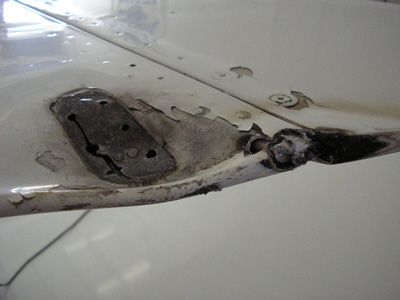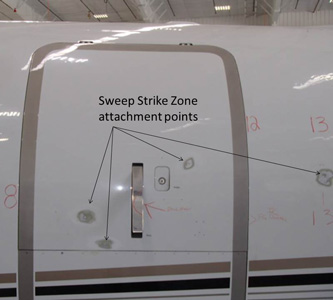

Left: Lightning exit burn
Right: Lightning Sweep Strike Zone
Summertime brings turbulent weather and lightning strikes.
At Duncan Aviation we see all types of damage ranging from light surface enter and exit burns to severe internal damage and composite ruptures of surfaces and tips. As lightning travels across the skin, called the sweep strike zone, it attaches itself to the aircraft surface in a line in the direction the aircraft is traveling. The longer it's attached, the greater the energy and subsequent damage.
Paint thickness, composite skin bonding and Mother Nature all play major roles in how and where this path of energy travels. Remember, every strike has its own personality and even a suspected strike reported from the pilots warrants a detailed inspection.
December 2025
November 2025
November 2025
October 2025
September 2025